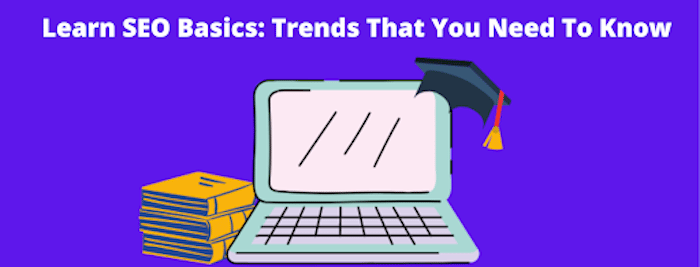Table of Contents
When it comes to the fundamental pillars of understanding Search Engine Optimisation or SEO Glasgow, there are several key areas to keep in mind. There is technical SEO, as well as On-page and Social media SEO. You will need to keep these in mind to ensure that you are taking all the proper steps when it comes to ranking up in search engines.

Understanding The Intent of The Search Query
A user’s search intent is vital to understanding your audience, determining what type of content they want, and optimising your website. Understanding the different kinds of search intent will allow you to optimise your content for better conversion rates.
Search engines are beginning to recognise the intent behind users’ queries clearly. For example, Google’s algorithm examines each page in its index for relevance to the search query. It also changes the results of keywords based on that intent. As a result, better intent optimisation means more relevant traffic to your website.
The main types of search intent are transactional, informational, commercial, and navigational. Each of these can have a different content composition. If your content does not match the meaning of the user, it will be penalised in the SERPs.
A common example of transactional intent is searching for where to buy a product. Usually, the first results will display a map, shopping carousels, reviews, or paid listings. Site links may also be included, depending on the particular search.
Informational search intent is when a user searches for information. These searches can be simple or complex. For instance, a user who searches for nutritional information could enter a search for “avocado calories”. In addition, they could use the keyword “NYC weather” to find a forecast for the upcoming week.
On-page SEO in Glasgow
On-page SEO is a practice that improves the quality of web page content. It includes HTML headers, meta tags, URLs, and other elements of the website. Optimising these elements ensures that search engines see your website as high-quality. This can lead to more traffic and business.
The quality of on-page SEO depends on four factors: relevancy, expertise, authority, and trustworthiness. Ensure that these factors are in place for each web page.
In addition to relevant content, you should include keywords. For example, LSI keywords (Latent Semantic Indexing) are related terms that help the search engine better understand the page’s content.
Using accurate anchor text is also essential. Google uses the anchor text within a sentence as a signal to determine its relevance. Therefore, an anchor that doesn’t match the page’s topic will need to be clarified for users.
You should also use relevant images on your web pages. They are a major component of the modern web, so they must be optimised appropriately. Getting the core section of the page right is 90% of the battle in on-site optimisation.
The Title Element (Title Tag) is another crucial part of on-site SEO. The title should be engaging to increase the click-through rate.
Link Building
Link building is one of the significant factors that determine your website’s search engine rankings. First, however, you have to know the right way to do it. Then, you can employ white hat SEO techniques for link building.
First of all, you need to consider the quality of the links you are getting. The more heightened the quality of the links, the better. If you are getting links from the wrong sources, you may lose out on the ranking potential.
It is also important to obtain links from authoritative sites. These are known to have high traffic. Getting links from these websites will give you credibility and trustworthiness in your niche.
A fitting link can increase your search engine rankings and improve your traffic. Moreover, if you build a right relationship with other websites, you can gain a lot from the process.
Another way to ensure a quality link is to create relevant content to your niche. For example, if you are a software company, you could create an infographic to highlight your products. This is an effective technique because it generates organic traffic to your blog.
Link building is a long-term process. First, it requires a plan to achieve the objectives. To do this, you must analyse the competition and niche, identify your objectives, and then prepare your strategy.
Optimising Headings
Headings are a vital part of your online content. They make your content more accessible and exciting to readers. Search engines also benefit from headings. As a result, it is vital to optimising headings for SEO in Glasgow. Here are tips to help you improve your SEO with headings.
Headings should be short, preferably less than five words, and use the primary keyword. Use an outline to help you decide where to place headings.
H1 headings are your most important. They are the first thing your visitors see. In some cases, your page will need more than one H1 heading. If so, you will need to format the content to make it work.
You should include your primary keyword in your H1 heading. But, make sure you don’t overdo it. Many people prioritise key phrases over user experience. But, your main goal is to provide your users with the best experience. The right amount of copy depends on your search engine ranking.
Headings are also a way to break up your content into separate scannable sections. When readers finish reading a section, they can easily move on to the next. Also, it makes it easier for search engines to crawl and index your content.
Optimising Meta Descriptions
Meta descriptions are an essential component of SEO. They serve as a call to action and are one of the first things that users see when searching. If your meta description is effective, you can boost traffic and raise your organic search results’ click-through rate.
There are several key considerations to keep in mind when writing a meta description. First, make sure that you use keywords that are important to the page’s content. Also, remember that a meta description should be a short but compelling snippet that tells visitors what to expect. Using the right language and creating a compelling call to action can help you increase your click-through rates and conversions.
The best way to optimise your meta description is to write it in an active voice. This helps to save character space and encourages users to click. It is also much more direct. You can use double quotation marks to truncate your description, but Google will truncate your meta description automatically if you use this technique.
Keeping your description between 100 and 155 characters is a good idea. However, it isn’t necessary to limit your meta description to this length. As long as it is not difficult to read and provides value, your description will be more likely to attract readers.
Technical SEO
Technical SEO fundamentals are crucial to improving your rankings and ensuring that your website is easy to find by the major search engines. Besides content, you should also optimise your site for mobile users. Google prioritises mobile sites because about 60% of all searches are performed on mobile devices.
Keeping your site fast and secure is important to Google. They also like a site that makes it easy to navigate. So creating an optimised site map is a top technical SEO tip. This will ensure that bots can crawl through your site easily.
A schema markup is another technical SEO best practice. It will give bots more detailed information about the contents of your pages. In turn, this will assist Google in the improvement towards your SERP results.
It’s no secret that the search engine world is constantly changing. Search engines have to scour millions of web pages in order to index them appropriately. By incorporating a canonical tag on each page, you can make the job easier on the crawlers.
The most efficient way to do this is to hire a professional. They can provide a number of services that will increase your visibility, enhance your user experience and boost your rankings.
Social Media
In the world of SEO, social media plays a significant role. It can help supplement the visibility of your brand and website. And if you want to see your SEO strategy work, you need to know how to incorporate it with your social media activities.
Social media platforms have millions of users every day. They can support your brand in reaching a broader audience, and they can build trust and brand authority. However, they can also affect your organic and word-of-mouth traffic.
The most important thing to recognise when using social media is to keep it relevant. That means you need to share quality content on a regular basis. Also, you require to fill in your profile correctly to ensure it appears legit. Adding extra details about your business can also increase your click-through rate.
If you want to rank well on Google and other search engines, you need to focus on optimising your social media activity. You should consider what works and what doesn’t for your brand, and you should measure your performance to identify areas for improvement.
Using social media for SEO can be a formidable venture. To conduct effective social media SEO you need to produce a solid content strategy, strong keywords, and a good social presence.


